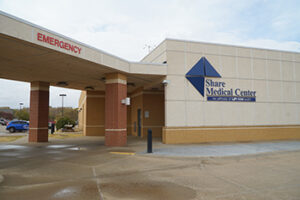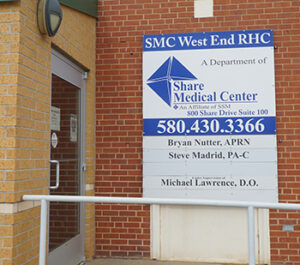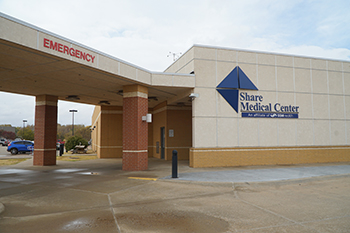By Connor Gray, Senior Reporter
Rural areas can be less appetizing for physicians, families
In rural communities, getting healthcare can be hard. Dr. Alan Hawxby, a native of Perkins, knows this well.
The town of 3,300 doesn’t have any primary care clinics, and the closest one is about 30 minutes away. The closest hospital about the same distance away. The places that best suit the needs of Hawxby and other physicians are large cities, leaving rural areas with a shortage of medical professionals.
“There are few places to eat and activities to do when it comes to small towns,” Hawxby, a surgical director in Denver, Colorado, said. “It’s difficult to bring a doctor there, especially their family.”
Rural communities across the United States have faced challenges hiring medical professionals, who often seek work in larger cities with more advanced medical facilities and more lifestyle options.

Around 20% of the U.S. population is in rural America, but only 11% of physicians work in rural areas. Three out of five physician shortages are in rural areas. Some parts of the country don’t have a physician within 50 to 100 miles.
A study by the Kaiser Family Foundation estimates that an additional 14,858 health care providers are needed to eliminate the shortage across the country, urban and rural alike.
LACK OF SPECIALIZED
FACILITIES
Many rural healthcare facilities can’t provide some higher-level surgical procedures, leaving doctors with specialized care practices to seek work in areas with larger populations.
Share Medical Center in Alva is among America’s rural hospitals with limited facilities and abilities to perform some procedures. The hospital offers cataract surgery and brings in cardiologists and other specialists, but some advanced procedures are unavailable. If Share doesn’t have what patients need, they have to travel to towns like Enid, Oklahoma City or Tulsa — all at least an hour away.
Some hospitals have spent millions of dollars trying to improve their facilities, allowing them to perform procedures and thus recruit new providers.
Grady Memorial Hospital in Chickasha laid off employees in 2015 because the hospital couldn’t keep funding general surgery operations. The Centers for Medicare and Medicaid Services found some of the conditions unsuitable in that area, forcing the hospital to stop performing surgeries — a major source of revenue.
The only way for the hospital to remain financially viable was to upgrade the surgical facilities, said Dr. Luke Toho, a general surgeon in Chickasha. Similar situations occurred at hospitals near Oklahoma City, Anita and Antlers, with each facing temporary closures.
Grady Memorial found a solution. From 2016 through 2018, the hospital spent roughly $17 million to upgrade the surgery wing so it could meet healthcare standards and keep the hospital open. Executives took pay cuts, and some staff worked reduced hours to help keep costs down.
A lack of facilities isn’t the only problem some rural hospitals face when trying to recruit providers.
FEW LIFESTYLE OPTIONS
Some towns are too small or too remote to be viable for physicians, but other facets of small-town life play a part as well. Limited lifestyle options can be a turn-off when trying to hire a doctor, some say. Many physicians have families looking for communities with recreational, cultural and educational offerings.
“It’s not really the doctor that is hard [to bring into a community],” said Kandice Allen, CEO of Share Medical Center in Alva. “It’s trying to sell it to the spouse on Alva, as they are usually the deal breaker.”
When the doctor’s spouse is also looking for job opportunities, a small community like Cherokee or Alva limits what they can do. So can religious differences, as some doctors of Jewish or Islamic faith may not have a synagogue or mosque to worship at in smaller places, said Dr. Kevin Johnson, a primary care provider in Lawrenceville, Georgia.
Hawxby has worked for more than 20 years as a surgeon. Hailing from Perkins, a Payne County town, Hawxby said urban areas are best for his profession and his family.
The trend is shown widely across the nation, as the the number of medical school students from rural areas who go back to rural communities decreased by 28% from 2002 to 2017, according to a 2019 study.
Low pay and high time commitment pose additional hurdles, healthcare providers say. Doctors are more duty-bound and feel handcuffed in a smaller community, as some only have a few doctors.

In Alva, when Dr. Phil Self retired this year, Share Medical Center moved his patients to other doctors or had patients look elsewhere. The hospital does not plan to add another doctor, Allen said. Share has used temporary solutions, such as contracting with surgeons outside of Alva, for specific in-demand procedures.
Some physicians face bureaucratic hurdles when obtaining a medical license in Oklahoma.
“Oklahoma makes it difficult to get a license,” Hawxby said. “It takes some time to get it, and it’s even worse for those outside the U.S. coming to Oklahoma.”
Physicians from overseas may have to wait years before being approved for a license, Hawxby said.
“Most do not care where they are located as long as they can come to the U.S.,” Hawxby said.
SOLVING THE SHORTAGE
An organization has made it their mission to get doctors back in rural areas.
The American Academy of Family Physicians aims to help bring doctors to rural America. The group specializes in training future primary care doctors to work in small communities.
The group has been around since 1947 and is one of the largest organizations in the U.S.
Johnson is a member of the group and said the organization has helped reverse the decline in rural physicians. Johnson has been training doctors for the last 15 years for the organization. He trains five trainee doctors on a rotation and has them on a monthly rotation. The rotation sends trainees to spend time getting to know a rural community and getting them used to rural healthcare practice.

